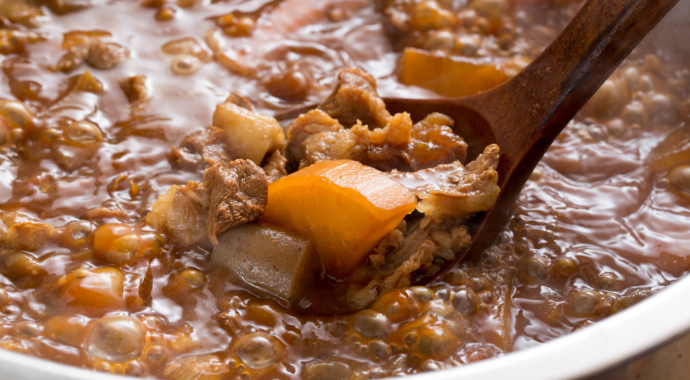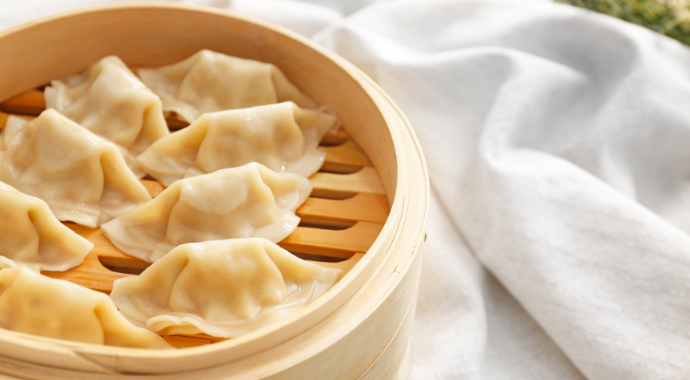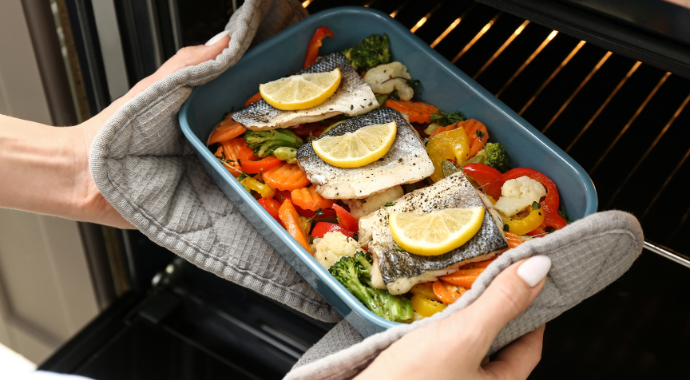Chinese Food Culture - 7 Different Cooking Methods to Try
Chinese Food Culture
7 Different Cooking Methods to Try

Whether you’re a complete beginner in Chinese cooking or just wanting to become a better cook, it’s important to master several basic cooking skills – which includes understanding multiple cooking methods. Try these 7 different cooking methods and you’ll be a master of Chinese cooking in no time!
Stir Frying
A very popular cooking technique in Chinese cooking is stir frying. Cooked in a pan called a wok, stir frying involves stirring and tossing meat and vegetables in a small amount of hot oil over high heat. Due to the fast cooking at a high temperature, vegetables stay bright and crisp, and meat is browned and succulent, ensuring that dishes are flavoursome and healthy.
For a dish that uses the stir fry method, try this recipe for Three Sauce Ginger and Beef Stir Fry.
Poaching
Poaching is a moist heat cooking method that cooks food by submerging it in liquid – often water or stock. The liquid is kept at a low temperature – lower than a simmer – and it cooks ingredients gently and relatively slowly. It’s useful to prepare delicate ingredients as there is no stirring and poaching, and results in food that is succulent and tender.
For a poaching method recipe, try this Soy Poached Chicken Noodle Soup.
Boiling and Simmering
Boiling and simmering are moist heat methods where food is cooked in liquid, such as water or stock. In boiling, the liquid is heated to boiling point, while in simmering the food is cooked in liquid that is kept just below boiling point. While the methods are similar, simmering is gentler and more suitable for delicate foods while boiling is suitable for items such as dry noodles, some grains, or green vegetables that need to be cooked quickly.
For a dish that uses the simmering method, rel="noopener noreferrer" try this recipe for Ma Po Tofu.

Steaming
Steaming is a moist heat cooking method and uses heat created by boiling water that vaporises into steam to cook the food. Unlike boiling, the food is kept separate from the water and only comes into direct contact with the hot steam.
Steaming is a natural and healthy way of cooking as it keeps nutrients inside the ingredients, and as the food is not moved or stirred during the cooking process, it’s useful for cooking delicate items such as fish, seafood, or tender vegetables.
To steam, all that is required is a lidded pot and steamer basket. Add a small amount of liquid into the pot, place your food in a basket suspended above the liquid (ensuring it doesn’t touch the water), cover the pot and bring it to a boil. The hot steam circulates around the pot and food, cooking it quickly.
For a recipe that rel="noopener noreferrer" uses the steaming method, try making a classic Steamed Fish with Soy Sauce.
Roasting
Roasting is a dry cooking technique that uses air to transfer heat and is commonly done in an oven set at temperatures between 100°C – 230°C. It’s a common method used to cook meats, fruits, and vegetables, and due to the dry heat, roasted food has a brown, crispy exterior and tender interior.
Foods that can be roasted successfully are large cuts of meat, poultry, and hearty vegetables.
Marinades can be used successfully rel="noopener noreferrer" during the roasting process – such as in this recipe for Chinese Barbecued Pork Char Siu.

Pan Frying
Pan frying is a dry heat way of cooking that uses oil or fat to transfer heat in a frying pan. Using a moderate amount of oil/fat, meat or vegetables are cooked at a constant medium-high temperature and turned at least once, resulting in a crisp coating, a rich caramelised exterior, rel="noopener noreferrer" while still remaining tender and juicy inside.
For a dish that uses this method, try this recipe for Prawn Egg Foo Young.
Deep Frying and Air Frying
Deep frying uses hot oil as the cooking medium, with food being completely submerged in the oil as it cooks. Another dry heat cooking method, deep frying uses high temperatures of up to 200°C, resulting in golden-brown food that has a characteristic crispiness and crunchiness.
Deep frying requires a generous amount of oil – enough to fully submerge the food – generally in a temperature range of 160°C to 190°C. Food should be fried in small quantities to prevent the oil temperature from dropping too much. Deep frying can be done successfully at home in a deep pot that’s no more than 1/3 full as hot oil can expand and become dangerous.
A common alternative method to deep frying which uses less oil and gives similar results is air frying. In an air fryer, food is placed in a perforated basket and hot air is blown around it, creating a convection rel="noopener noreferrer" effect that cooks, browns, and crisps the food.
For a dish that uses this method, try this recipe for Air Fried Pork Wonton with Lee Kum Kee Dipping Sauce.

 Corporate Site
Corporate Site